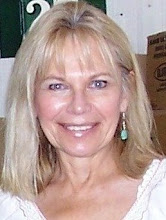Radun
Radun is a small government-owned town on the Radunka River, Lida powiat [district, county], in the 4th political district, center of a gmina [township, commune] and a rural district; it is an estate belonging to the treasury, 30 km. northwest of Lida, 37 km. from Wasiliszki, and 82 km. from Wilno, on a side road that in the 16th century was the shortest highway between Wilno and Krakow.
In the year 1881 there were 1,526 inhabitants (757 male and 769 female); in the year 1866 there were 91 houses and 869 inhabitants (361 Catholics and 508 Jews); it has a wooden Catholic church and chapel, a synagogue, gmina administrative office, and a public school, which in the year 1885-86 was attended by 56 boys and 2 girls. It is the property of the treasury, which gave the lands back to the peasants for purchase.
About 2 km. from the town, on a vast plain near the village of Horodyszcze, is a large trench, and even though the inhabitants call it the "Swedish" trench, its shape and the name of the adjoining the village shows that it was a fortified citadel of long ago. According to Balinski (Star. Polska, III:259), Radun was called Radomi by 16th-century travelers and writers.
This small town was once a royal estate, from which the income went to pay for the king's court and table. According to a 1538 inspection, it had 7 streets, in addition to the market square, and 210 houses of Christians—Jews were forbidden to settle there. It had 35 saloons for selling beer, 7 for mead, and one only for liquor. Later Radun became the site of a starostwo not affiliated with a grod, and in 1770 that office included the town with appurtenances.
In the year 1766 Jozef Tyszkiewicz, the castellan of Mscislaw [now Mstsislav, Belarus] bought it, and on it he paid a kwarta of 2,616 zloty, 5 groszy, and a hyberna of 2,690 Polish zloty. At the Sejm of 1773-75, the [Polish-Lithuanian] Commonwealth government addressed recurring disputes over the borders of this starostwo by passing a separate law designating six officials as ad hoc commissioners to settle the matter once and for all.
In the Metryka Litewska, the series of Radun starostas begins toward the end of the 15th century with Janusz Kostewicz (1498-1527), followed by Jan Hlebowicz (1527), Szymko Mackiewicz (1532-1541), Stanislaw Kiezgajlo (1546-1549), Augustyn Fursowicz (1551), Jurij Wolczkowicz (1556), Jan Hercyk (1569), and Mikolaj Talwosz (1581).
The Catholic parish church of Our Lady of the Rosary dates from 1838, transferred from the village of Kolesniki [now Kalesninkai, Lithuania], due to the closing of the Carmelite monastery there. Previously there had existed a church from the year 1752, which burned down; rebuilt in 1801, it suffered the same fate again. There is a small chapel in the cemetery. The Catholic parish, of the Radun deanery, has 7,522 souls. At one time there was a branch of the church in the village of Dubicze.
The Radun deanery consists of 11 parishes: Radun, Ejszyszki [Eisiskes, Lithuania], Wasiliszki, Nacza, Bieniakonie, Zablocie, Wawiorka, Iszczolna, Woronow, Ossow, and Soleczniki [Salcininkai, Lithuania], for a total of 58,768 souls.
In this parish the terrain is level and treeless, overgrown in some places with bushes and covered with marshes. The soil is sandy, with a lot of gravel. It is irrigated by the following rivers: Dzitwa, Pielasa, Radunka, Naczka, Sopunka, Jodub. The rural district includes the town of Radun and the villages of Juciuny, Straczuny, Horodyszcze, Jatowty, Popiszki, Skladance, Wojkunce, and the nobles' farm settlement of Poradun, for a total as of the year 1864, according to the treasury rewizja [census] of peasants of 565 serfs, 3 men of jednodworzec [minor nobility] status, and 32 free men.
The gmina of Radun belongs to the 3rd district chamber of peasant affairs in the town of Ejszyszki, as well as to the 3rd conscription center for the same place in Lida district, and consists of four rural districts: Radun, Mozejki, Kiwance, and Pielasa, including 67 villages with 536 houses, inhabited by 6,969 peasants. According to the 1864 census, there were in the gmina 1,740 serfs, according to the treasury rewizja of peasants, 346 enfranchised farmers, 85 of jednodworzec status, 56 Jewish farmers, and 32 free men, for a total of 2,259 souls.
Jatowty
Jatowty, a government-owned village, Lida powiat, in the 4th administrative district, 21 km. from Lida, 42 km. from Wasiliszki, 5 houses, 46 Roman Catholic inhabitants (1866).
Kiwance
Kiwance, 1) a village on the Radunka River, Lida powiat, in the 4th administrative district, Radun gmina, 30 km. from Lida, 37 km. from Wasiliszki, 19 houses, 181 Roman Catholic inhabitants. 2) a peasant village, 6 houses, 42 Catholic inhabitants.
Odwierniki
Odwierniki, a peasant village, Lida powiat, in the 4th political district, belonging to the Radun gmina and rural district and treasury-owned estate of Kiwance, 4 km. from the gmina, 34 km. from Lida, and 41 km. from Wasiliszki, has 8 houses and 66 Catholic inhabitants. (25 souls in the rewizja)
Polunce
Polunce, a peasant village, Lida powiat, in the 4th political district, belonging to the Radun gmina and rural district and treasury-owned estate of Kiwance, 1 km. from the gmina, 39 inhabitants.
Posady
Posady, a peasant village on the Radunka River, Lida powiat, in the 4th political district, belonging to the gmina and treasury-owned estate of Kiwance, 2 km. from the gmina, 32 km. from Lida and 40 km. from Wasiliszki, has 9 houses, 92 Catholic inhabitants (42 souls in the year 1864, per the rewizja).
Skladance
Skladance, a peasant-owned village, Lida powiat, in the 4th political district, gmina, rural district and treasury-owned estate of Radun, 5 km. from the gmina, 23.5 km. from Lida, and 44 km. from Wasiliszki; it has 25 houses, 204 Catholic inhabitants (in 1864 there were 81 souls per the rewizja).
Radun area ca. 1928











Welcome to the Geneabloggers family. Hope you find the association fruitful; I sure do. I'm fairly new, as well, and have found it most stimulating, especially the Daily Themes.
ReplyDeleteWe have a son-in-law of Polish descent - Rathsack (americaized, I'm sure) - has been fun to attempt to help on his family research.
Keeping telling your ancestor stories!
Dr. Bill ;-)
http://drbilltellsancestorstories.blogspot.com/
Nice to meet you, Dr. Bill! Geneabloggers seems to offer a lot—I'm just beginning to tap into it, and really enjoying the site. Rathsack is an interesting, and surely Americanized, surname. I look forward to reading your blog!
ReplyDelete